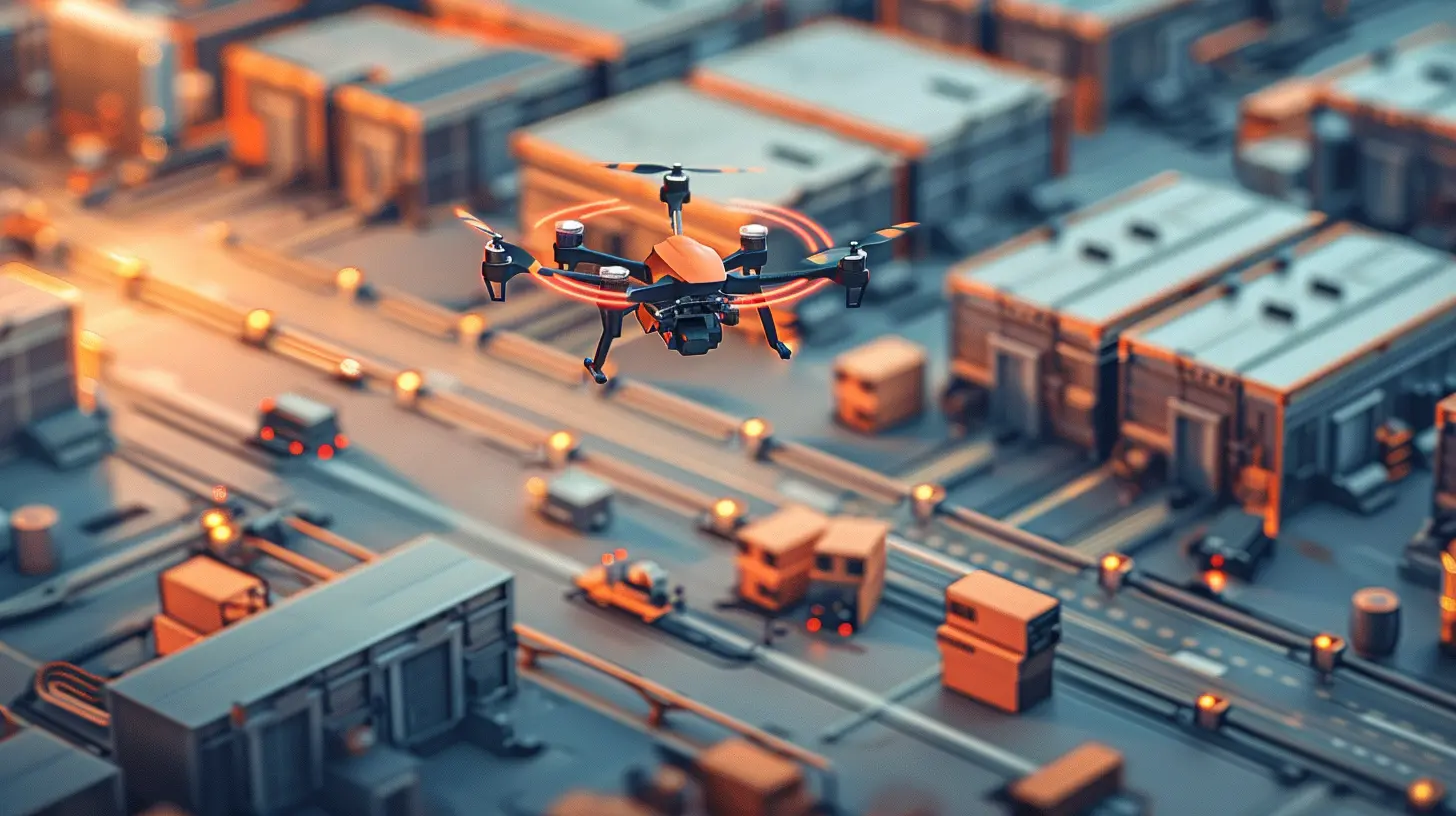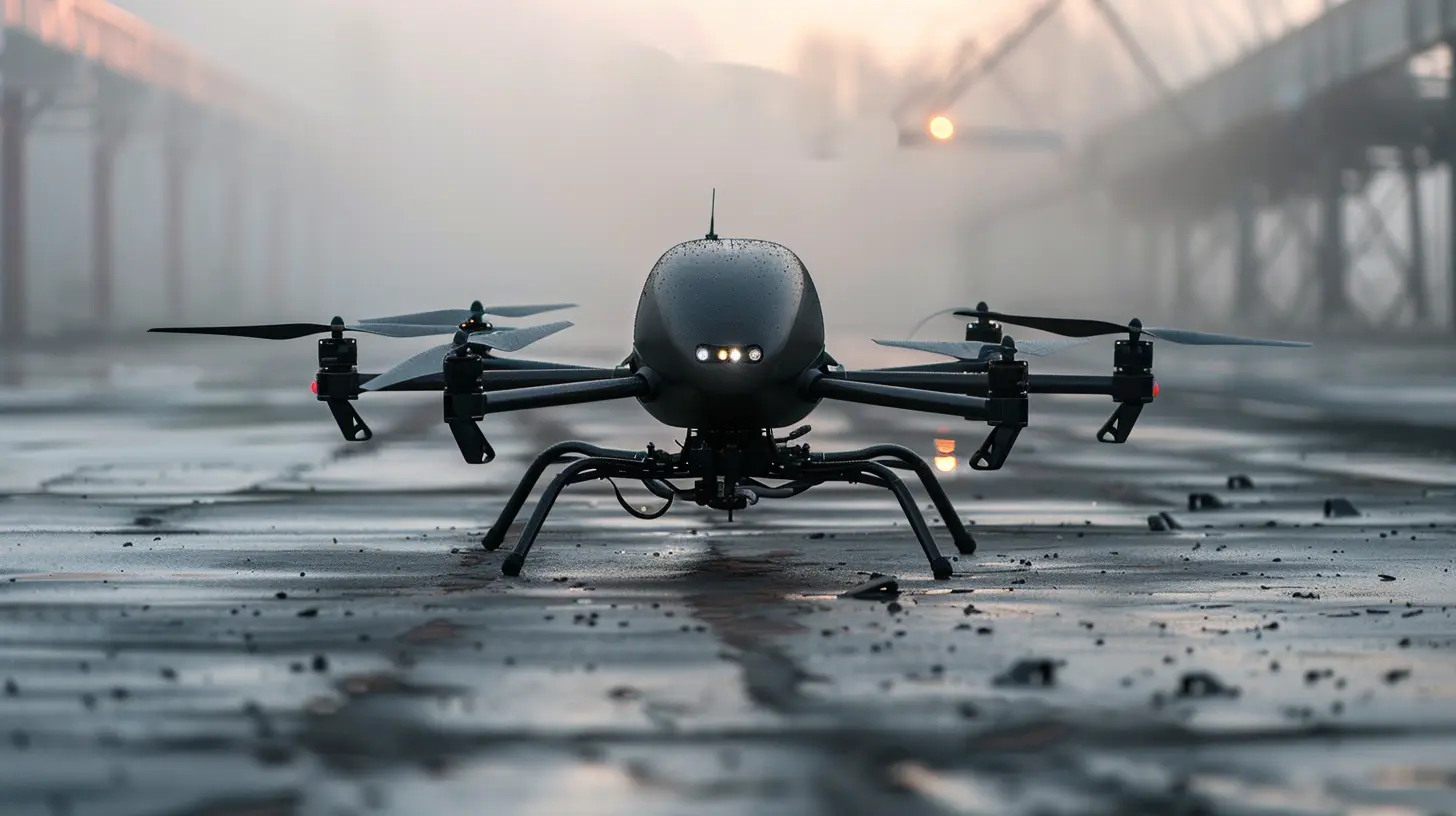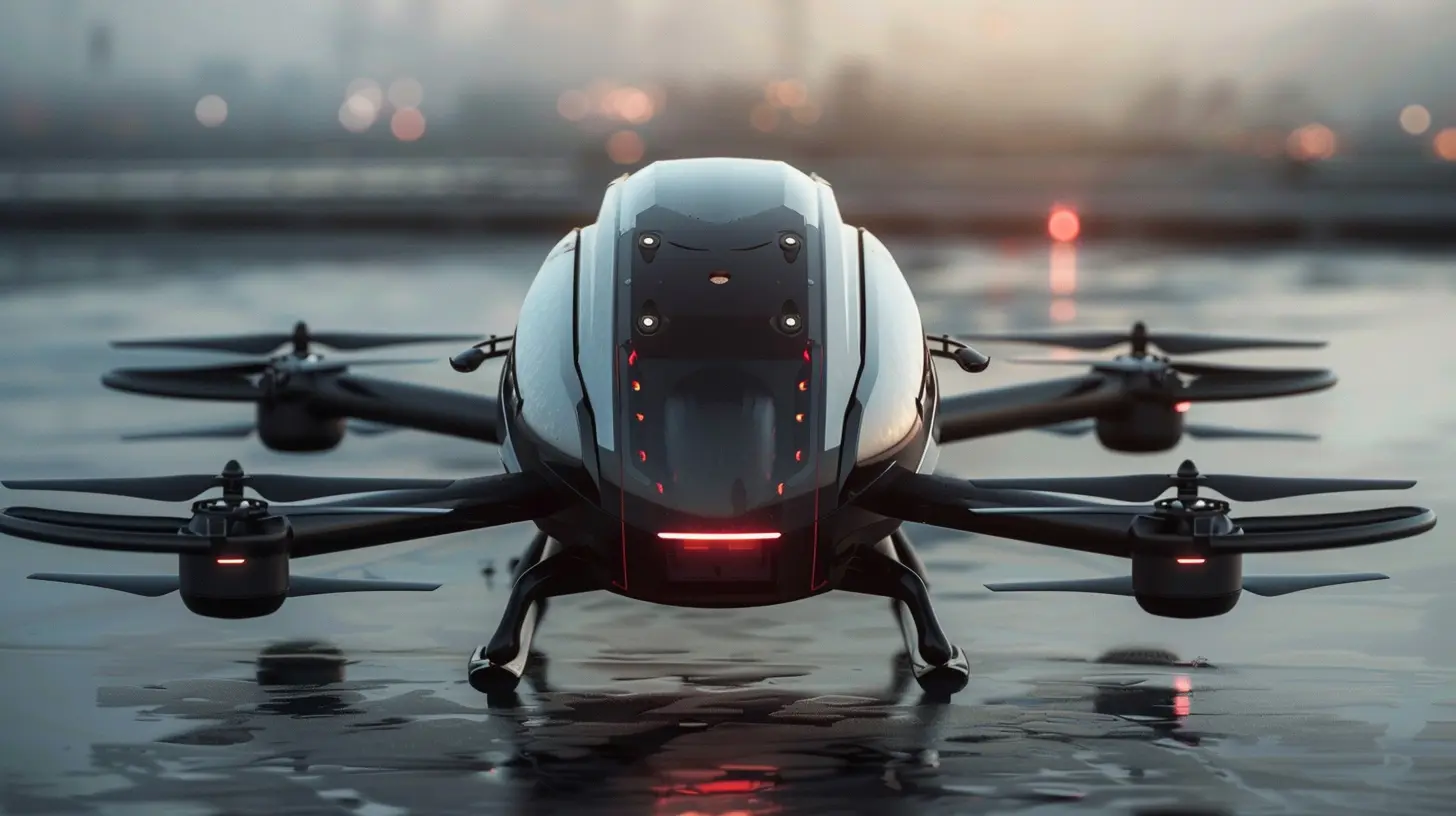How Autonomous Drones Are Changing Delivery Systems
6 November 2025
In recent years, technology has been advancing at a breakneck pace, and one of the most fascinating developments is the use of autonomous drones in delivery systems. Imagine a future where your pizza, your online shopping order, or even crucial medical supplies are dropped at your doorstep by a drone, no human involvement necessary. That future is no longer a distant dream—it's closer than we think!
Autonomous drones are already making waves in various industries, and their impact on delivery systems is nothing short of revolutionary. But how exactly are these flying robots transforming how goods are transported? Let’s dive in and explore the ways autonomous drones are reshaping the landscape of delivery services.

What Are Autonomous Drones?
Before we get into the nitty-gritty of how these gadgets are changing delivery systems, let’s first clarify what autonomous drones are. In simple terms, an autonomous drone is an unmanned aerial vehicle (UAV) that can fly and navigate without human intervention. These drones use artificial intelligence (AI), GPS, sensors, and cameras to understand their surroundings, avoid obstacles, and make decisions mid-flight.Unlike traditional drones, which require a human pilot using a remote control, autonomous drones are self-sufficient. They can take off, fly, and even deliver packages without any real-time input from a person. And that, my friends, is where the magic happens.

The Evolution of Delivery Systems
Delivery systems have come a long way. From horses and carriages to trucks and planes, we’ve continuously innovated how we move goods from point A to point B. However, traditional delivery methods face several challenges. Traffic congestion, labor shortages, high costs, and environmental concerns are just a few of the pain points plaguing the logistics industry.Enter autonomous drones—a game-changer that could address these challenges head-on. The ability to fly over traffic, reduce delivery times, and operate 24/7 makes drones an attractive option for businesses looking to streamline their delivery processes.

Benefits of Autonomous Drones in Delivery Systems
1. Faster Delivery Times
One of the most obvious advantages of using autonomous drones for delivery is speed. Ground-based vehicles are subject to traffic jams, roadblocks, and other delays. Drones, however, can soar through the sky, bypassing all of these obstacles.Want your package in under 30 minutes? With drones, that’s entirely possible. Whether it's a fresh meal from your favorite restaurant or a critical medical supply, drones are capable of delivering items faster than traditional methods.
2. Cost Efficiency
Running delivery trucks or hiring drivers involves significant costs—fuel, labor, vehicle maintenance, and insurance, to name a few. Drones, on the other hand, can be more cost-efficient in the long run. While the initial investment in drone technology may be high, the reduced operational costs can lead to substantial savings over time.Plus, drones don’t require breaks, and they don’t take days off. They can work around the clock, ensuring that deliveries are made quickly and efficiently, all with lower overhead costs.
3. Eco-Friendly Solutions
Another significant benefit is the environmental aspect. Traditional delivery vehicles contribute to air pollution and carbon emissions. By switching to drones, companies can reduce their carbon footprint. Most drones run on electricity, making them a greener alternative to gas-guzzling delivery trucks.In a world that’s becoming increasingly conscious of climate change, integrating more eco-friendly solutions into logistics is a step in the right direction. Autonomous drones offer a way to deliver products without harming the planet.
4. Reach Remote or Hard-to-Access Areas
For people living in rural areas or places with difficult terrain, getting essential supplies can be a challenge. Traditional delivery services may take days to reach these locations, or in some cases, they may not reach them at all. Drones, however, can easily fly over mountains, rivers, and forests to deliver goods to even the most remote corners of the world.This capability is particularly valuable for humanitarian efforts. In disaster-stricken areas where roads may be blocked or destroyed, drones can deliver critical supplies like food, water, and medicine.

Challenges Facing Autonomous Drone Delivery
Of course, no technology is without its challenges, and autonomous drones are no exception. While the potential benefits are enormous, there are still significant hurdles that need to be addressed before drone delivery becomes widespread.1. Regulatory Hurdles
One of the biggest challenges is regulatory approval. Different countries have varying laws regarding the use of drones in public airspace. In many places, regulations are still catching up with the technology, and strict restrictions may limit how and where drones can operate.For instance, there are concerns about privacy, air traffic safety, and potential collisions with other drones or aircraft. Governments and regulatory bodies are working to create clear rules, but until these are fully established, drone delivery may remain limited.
2. Security Concerns
With any new technology, security is always a concern. Autonomous drones could be vulnerable to hacking, data breaches, or even theft. Imagine a drone carrying a valuable package being intercepted mid-flight by someone with malicious intent.To counter these risks, drone manufacturers and delivery companies are investing in advanced encryption and security measures, but it’s still a concern that needs to be addressed as the technology evolves.
3. Weather Dependency
While drones can bypass traffic, they’re still at the mercy of the weather. High winds, heavy rain, or snow can make it difficult or even dangerous for drones to operate. Until drones are better equipped to handle adverse weather conditions, they may not be a reliable option in all climates.4. Payload Limitations
Right now, drones can only carry relatively small and lightweight packages. While this is fine for delivering food, medicine, or small electronics, it’s not ideal for larger items. In the future, we may see drones capable of carrying heavier loads, but for now, there are limitations on what they can deliver.Industries Being Revolutionized by Autonomous Drone Delivery
So, who’s already jumping on the drone bandwagon? Several industries are seeing major transformations thanks to autonomous drones.1. E-Commerce
E-commerce giants like Amazon and Alibaba are already experimenting with drone delivery systems. Their goal is to reduce the time between placing an order and receiving the product, making same-day or even same-hour deliveries a reality. Drones could radically change the way we shop online, providing customers with near-instant gratification.2. Food Delivery
Food delivery services are also exploring drone technology. Imagine ordering pizza, and within minutes, a drone is at your door with a hot, freshly made pie. Companies like Uber Eats and Domino's are testing drone deliveries to see if they can enhance customer experiences while reducing delivery times.3. Healthcare
Perhaps one of the most exciting applications of drone technology is in healthcare. Drones are already being used to transport blood samples, organs, and even vaccines in some parts of the world. In emergency situations, where every second counts, drones can deliver life-saving medical supplies faster than any ambulance.4. Logistics and Supply Chain
For logistics companies, drones offer the potential for faster, more efficient deliveries. They can help streamline supply chains, reduce costs, and improve delivery times. Big players like UPS and DHL are actively testing drone deliveries for last-mile logistics, which is often the most expensive and complex part of the delivery process.
The Future of Autonomous Drone Delivery
So, where do we go from here? Autonomous drones are still in their infancy, but the potential is enormous. As drone technology continues to improve, we may see these flying robots become a common sight in our skies.In the future, drones could be used for everything from delivering groceries to transporting heavy machinery. With advancements in AI, energy efficiency, and security, the limitations of today’s drones may soon be a thing of the past.
We can also expect to see more collaboration between governments, tech companies, and regulatory bodies to create frameworks that allow for the safe and widespread use of drones in delivery systems. While there are still some hurdles to overcome, the future of autonomous drone delivery is bright.
Conclusion
Autonomous drones are poised to change the game when it comes to delivery systems. From faster delivery times to cost efficiency and eco-friendly solutions, the benefits are hard to ignore. While there are still challenges to overcome, including regulatory issues and security concerns, the potential is undeniable.Whether you're ordering your favorite takeout, waiting for an online purchase, or in need of critical medical supplies, it's not far-fetched to imagine a world where a drone is making that delivery. The future is in the air—literally.
all images in this post were generated using AI tools
Category:
Tech NewsAuthor:

Ugo Coleman
Discussion
rate this article
1 comments
Colton Roberson
Autonomous drones are revolutionizing delivery systems by enhancing efficiency and reducing costs. As technology advances, we can expect faster, more reliable service, transforming how we think about logistics and shipping. Exciting times ahead!
November 9, 2025 at 12:54 PM

Ugo Coleman
Thank you for your insightful comment! Indeed, the advancements in autonomous drone technology are set to reshape the logistics landscape significantly. Exciting times indeed!


